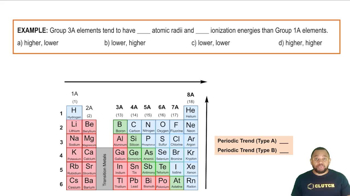Here are the essential concepts you must grasp in order to answer the question correctly.
Band Gap
The band gap is the energy difference between the valence band and the conduction band in a solid material. It determines the electrical conductivity of the material; a larger band gap typically indicates that the material is an insulator or semiconductor, while a smaller band gap suggests metallic properties. Understanding band gaps is crucial for predicting how materials will behave in electronic and optical applications.
Recommended video:
Intepreting the Band of Stability
Semiconductors and Insulators
Semiconductors are materials that have a moderate band gap, allowing them to conduct electricity under certain conditions, such as increased temperature or doping. Insulators, on the other hand, have large band gaps, preventing the flow of electricity under normal conditions. The classification of materials based on their band gaps is essential for applications in electronics, photovoltaics, and optoelectronics.
Recommended video:
Trends in Group 15 Elements
The elements arsenic (As), antimony (Sb), and bismuth (Bi) belong to Group 15 of the periodic table, which shows trends in properties such as atomic size and electronegativity. As you move down the group, the band gap generally decreases due to increased atomic size and decreased electronegativity, affecting the overlap of atomic orbitals. Recognizing these trends helps in predicting the electronic properties of these elements.
Recommended video:
Main Group Elements: Periodic Trends Example
 Verified step by step guidance
Verified step by step guidance


